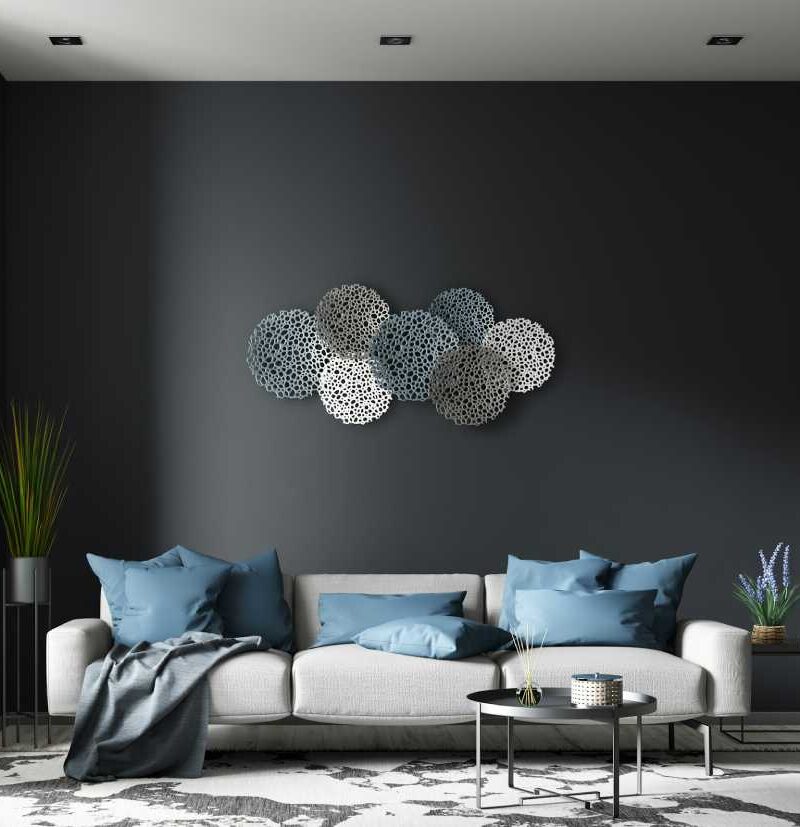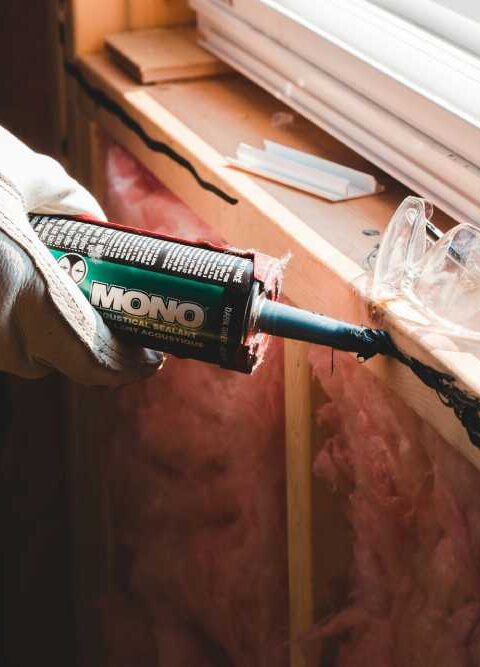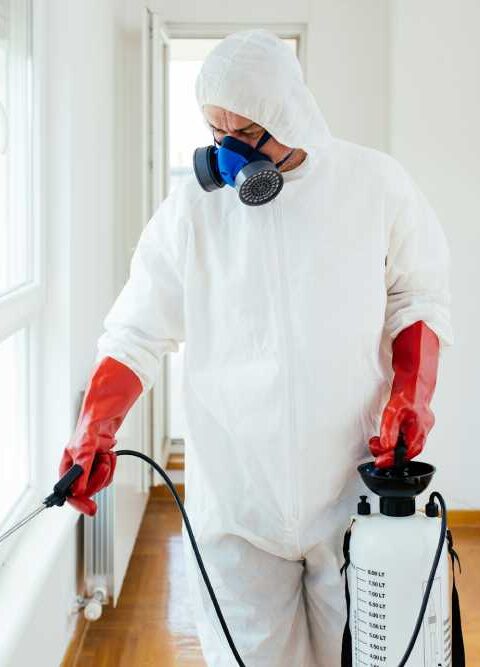Wall stickers are a common and cost-effective method of enhancing room decor, providing a personal flair to walls without the long-lasting nature of paint or wallpaper. However, while they’re fun to put up, removing them can sometimes leave behind a sticky mess. This article offers practical advice and techniques to remove residue safely, keeping your walls clean and prepared for future changes.
Preparing Your Workspace
Before dealing with the sticky residue, it is crucial to get your workspace ready to guarantee an efficient and secure cleaning procedure. Knowing how to remove adhesive from wall surfaces effectively is vital to keep your walls looking pristine.
As necessary, collect all essential tools and supplies, such as a gentle cloth, sponge, mild soap, plastic scraper, and household products like vinegar or baking soda. Having everything at hand will make the task quicker and less frustrating.
Make sure you are also in a properly ventilated place while working to prevent breathing in any fumes from the cleaning products. Open windows if possible and wear gloves to protect your hands from irritants. These preparation steps are especially critical if you use commercial adhesive removers.
Household Methods to Remove Sticker Residue
Using Warm, Soapy Water
Sometimes, all you need to eliminate sticker residue is an essential mix of warm, soapy water. This technique works particularly well in smaller residue areas. Combine a small amount of gentle soap with warm water and dip a cloth into the mixture.
Apply the wet cloth to the sticky area and let it sit for several minutes to soften the adhesive. This soaking process helps to loosen the bond between the adhesive and the wall surface.
After allowing it to sit, gently scrub the area with the cloth in a circular motion until the residue starts to lift. This method is typically safe for all wall types, including painted and wallpapered surfaces.
Application of Vinegar and Water Solution
Vinegar is a natural cleaner famous for its capacity to break down glues. Combine equal parts white vinegar and water in either a spray bottle or a bowl for this method. Apply a sponge or cloth soaked in the vinegar solution to the sticky area.
Allow it to sit for several minutes to penetrate the adhesive. The vinegar’s acetic acid assists in breaking down the glue, simplifying its removal. Rub the area with a sponge or cloth until the residue comes off. This method is particularly effective for more significant or stubborn residues and is a great eco-friendly cleaning option.
Benefits of Using a Hairdryer
A hairdryer can effectively loosen adhesive residues thanks to its ability to generate directed heat. Set your hairdryer to low or medium heat to avoid damaging the paint or wallpaper. Hold the hairdryer a few inches away from the sticky residue and move it back and forth to apply even heat.
After a few seconds, the adhesive should start to soften. Utilize a plastic scraper or an outdated credit card to remove the softened adhesive. This method is beneficial for painted walls, as it minimizes the risk of scraping off paint and the adhesive.
Commercial Products That Can Help
If household solutions don’t work, several commercial adhesive removers are available. Products like Goo Gone, WD-40, or Goof Off are formulated to break down adhesive residues effectively. Follow the manufacturer’s instructions for application—usually, you’ll apply the product to the residue, let it sit for a few minutes, and then wipe it away with a cloth.
First, test the product on a small, inconspicuous area to ensure it doesn’t discolor or damage the wall surface. Additionally, use these products in a well-ventilated area to avoid inhaling fumes. These commercial solutions can be more aggressive in removing stubborn residues, making them a good option when household methods fall short.
Gentle Scraping Techniques
Sometimes, even after applying solutions or heat, a gentle scraping technique is necessary to remove the remaining adhesive residue. Utilize a plastic scraper or an outdated credit card to remove the adhesive delicately. Position the scraper at a shallow angle and carefully push it under the residue to lift it off.
Avoid using metal scrapers, which can easily gouge or scratch the wall surface. For best results, combine this method with one of the above solutions. By learning the best practices for using plastic scrapers, you can effectively remove adhesive residue without causing damage to your walls.
Alternative Household Solutions
Olive Oil or Coconut Oil
Olive oil and coconut oil can also soften adhesive residues. These oils penetrate and break down the sticky substance without damaging the wall. Use a cloth or sponge to apply a small quantity of oil onto the remaining residue and allow it to sit briefly.
The oils will loosen the adhesive, making it easier to wipe away with a clean cloth or paper towel. This method is gentle and effective, especially for walls you want to preserve in their original condition.
Baking Soda Paste
Another common household item that can eliminate sticky residue is baking soda. Combine baking soda with a small quantity of water to form a paste. This produces a mild abrasive that can dissolve more rigid residues. Use the paste on the sticky surface and softly clean it with a cloth or sponge.
Baking soda is safe for most wall surfaces and is an excellent option for stubborn adhesives that resist other methods. It’s also an eco-friendly and inexpensive solution readily available in most households.
Peanut Butter
Though it may sound unusual, peanut butter can effectively remove adhesive residue. The oils found in peanut butter break down the adhesive, simplifying its removal. Spread a light layer of peanut butter over the remaining material and let it sit briefly.
Next, utilize a fabric or tissue to clean it away. This method is beneficial for small areas of residue. It may work well, but it could mean extra cleaning is needed to remove the greasy residue from the peanut butter.
When to Seek Professional Help
If you’ve tried multiple methods and still can’t remove the residue, it might be time to call in professional help. Sometimes, the adhesive must be more stubborn, or the wall surface must be more delicate for DIY methods.
Professionals have specialized tools and products designed for tricky adhesive removal. Employing a skilled individual can help you save time and guarantee that your walls are correctly cleaned without any harm.
The price of professional services may differ, but the advantages typically exceed the dangers of potentially harming your walls with ineffective DIY approaches. Consider this option if dealing with large residue areas or delicate wall surfaces like vintage wallpaper or murals.
Maintaining Wall Integrity
Once you’ve successfully removed the adhesive, it’s essential to maintain your wall’s integrity. Begin by wiping down the walls using a moistened cloth and a gentle cleaning product to eliminate any leftover cleaning residue or grime. This step ensures that there’s no lingering adhesive that could attract dirt or dust.
If the paint has been damaged during removal, consider touching the area with matching paint. Walls that show significant damage may require a new layer of paint or fresh wallpaper to make them look good again. To future-proof your walls, consider using removable wall hooks or sticky pads designed to leave no residue, especially when hanging decorations or artwork.
Conclusion
Removing wall sticker residue doesn’t have to be a daunting task. You can return your walls to their original condition without causing any harm if you use the correct tools and methods. Whether you opt for household methods like warm, soapy water and vinegar or turn to commercial products, it’s essential to be gentle to avoid causing damage.
If DIY methods fail, professional help is always an option to ensure your walls remain in perfect condition. By preparing and using the proper techniques, you can keep your walls looking clean and ready for whatever design you choose next.







